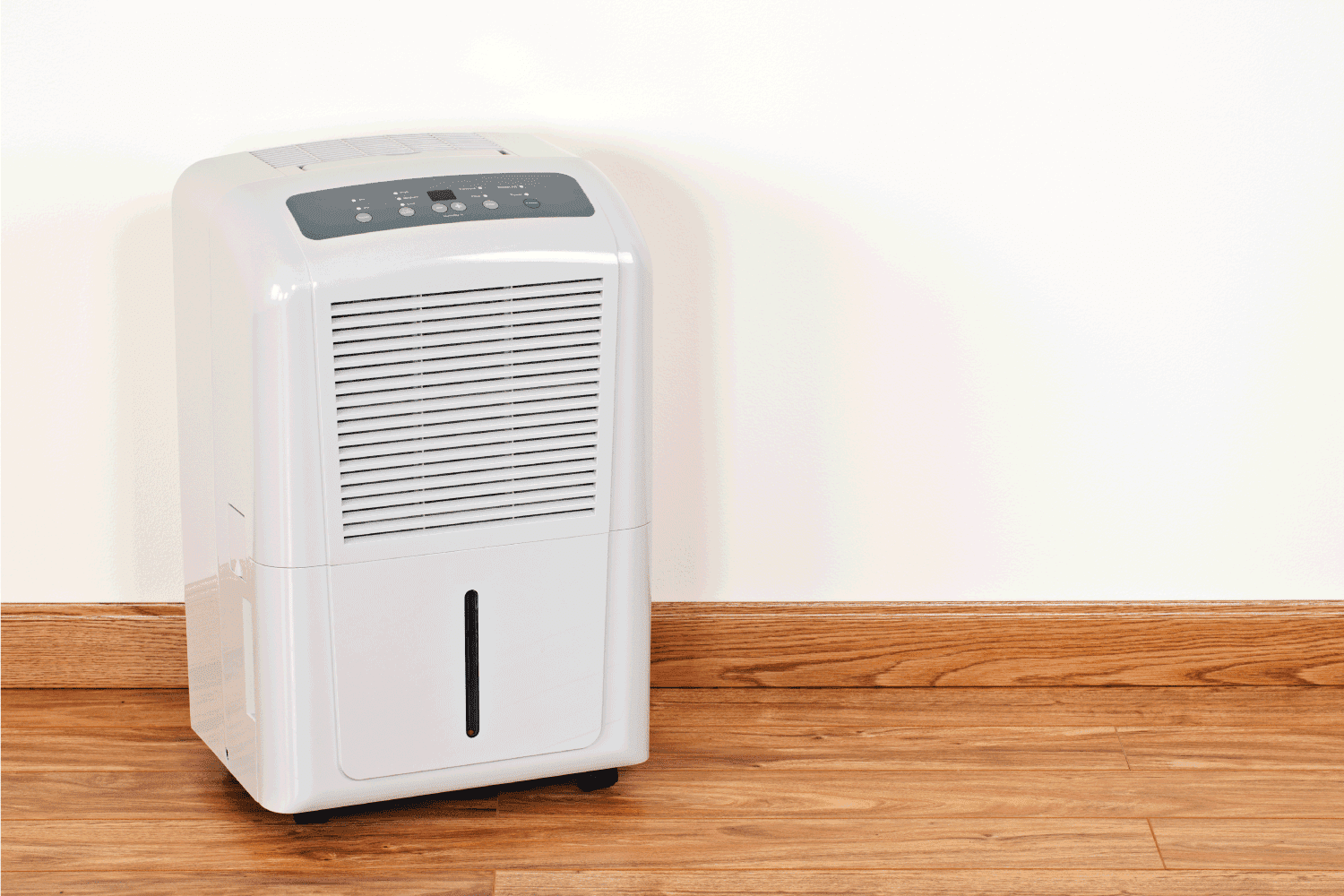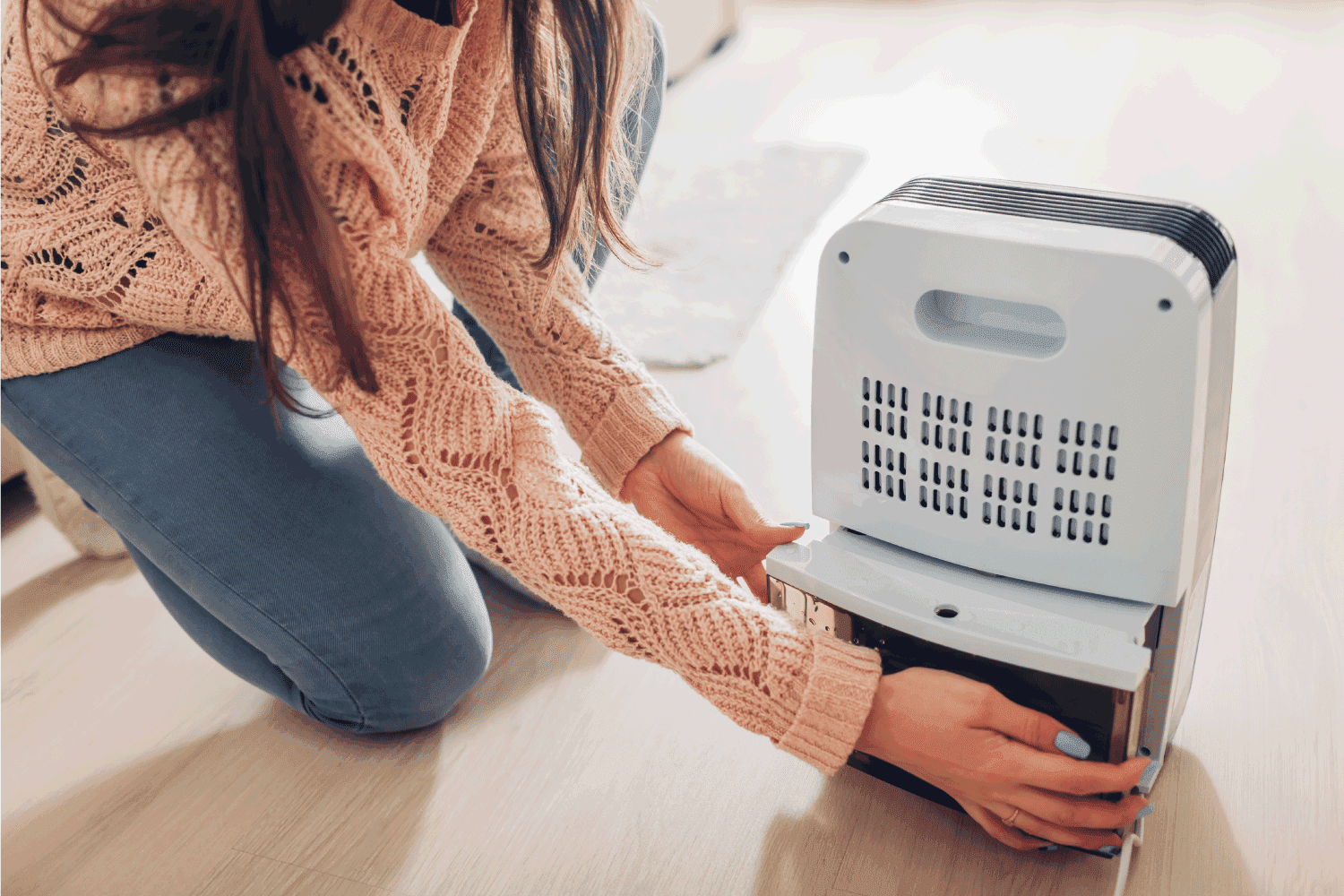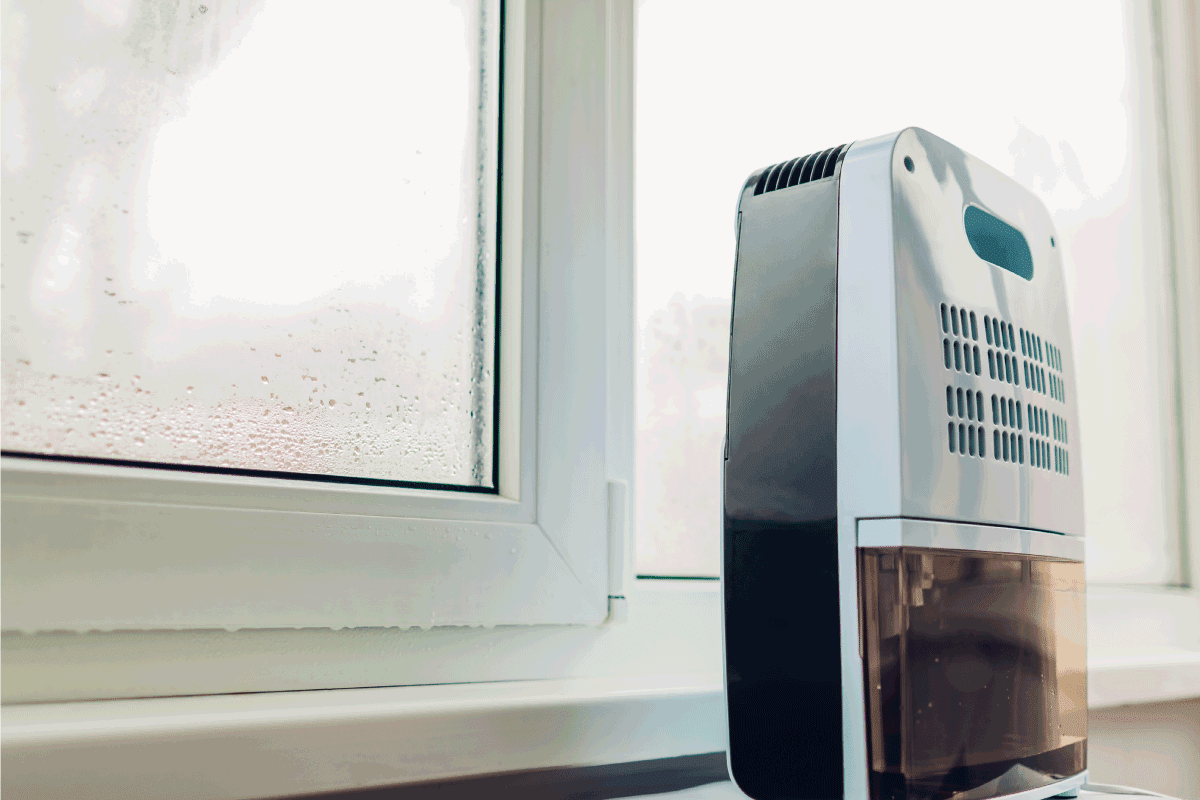After a dehumidifier is used for a while, it will need to be drained. However, how do you drain a dehumidifier with a hose? We have done the research to answer this question in this article.
In order to drain a dehumidifier with a hose, follow these steps:
- First, locate the drain valve on the back of the dehumidifier.
- Next, connect the drain hose with the dehumidifier to the drain valve.
- Finally, put the drain hose into the drain.
- If needed, elevate the dehumidifier to help the water drain.
- You can either leave the hose in permanently or remove the hose once empty and put the drain valve cap back on.
Dehumidifiers are excellent for homes that experience too much moisture. In this article, we will take a closer look at how to drain a dehumidifier. In addition, we will answer other frequently asked questions about draining dehumidifiers, so read on!

How To Drain Dehumidifier With A Hose
A dehumidifier works by extracting water from the air. This water is then stored in a reservoir or collected in a bucket. A dehumidifier is an essential appliance for anyone with high humidity and poor ventilation in their home.
Homeowners and renters alike should own a dehumidifier to preserve the structural integrity of their homes. Dehumidifiers not only prevent mold and mildew growth, but some models offer built-in functionality that can alert you when it is time to drain the excess water.
There are a few ways to drain a dehumidifier with a hose. The first way is to locate the drain valve on the back of the dehumidifier. Once you have located the valve, connect the drain hose with your dehumidifier to the valve.
Next, put the other end of the hose into a drain. If needed, you can elevate your dehumidifier to help the water drain faster. Finally, you can either leave the hose in permanently or remove it and put the cap back on the drain valve once it is empty.

Alternative Method - Separate Drain Hose
The second way to drain your dehumidifier is by purchasing a separate drain hose. The reason being is that not all dehumidifiers come with a drain hose. In this case, you can find a garden house or other hoses from a hardware store that will fit the drain valve.
With this method, you will need to unplug your dehumidifier and place it on its side or upside down. Then, while it is still wet, plug in the extension hose that came with your dehumidifier to the nearest drain spout. Then elevate your dehumidifier to let the water drain out.
There are a few pros and cons to both of these methods. The first method is inexpensive, but you may not want to leave the dehumidifier on its side or upside down for an extended period of time.
If you frequently have company over, it is possible that someone may bump into your dehumidifier, knocking it over and spilling the water. The second method is more expensive, but it is a one-time purchase. You can also leave the dehumidifier in an upright position while it drains.
Whichever method you choose, you must regularly empty the water reservoir or bucket in your dehumidifier to keep it running at peak performance. Also, be sure that you use a hose or bucket and not your hands to prevent mold and mildew growth on the dehumidifier's water reservoir.
What Kind of Hose Do you Use for a Dehumidifier?
Different dehumidifiers come with different types of hoses. Some models come with a hose specific to the model. However, some don't come with one at all. In this case, you can purchase a hose from a hardware store that will fit your dehumidifier unit.
In addition, a short garden hose might also work. The outlet valve to the dehumidifier should fit a garden hose. If the hose is not long enough, you can use a water bottle or jug to extend the hose's reach.
Simply place the jug or bottle next to the dehumidifier and attach the garden hose to it. This will help increase the water pressure and make it easier for the water to flow.
Can I Drain the Dehumidifier into a Sump Pit?
Yes, you can. Place the other end of the hose into the sump pit, and the dehumidifier will drain directly into it. This is an excellent option if you don't have a nearby drain.
It is important to note that you should never pour water directly down the drain or toilet as this can cause clogs. Instead, always use a hose or bucket to collect the water from the dehumidifier.
A sump pit is a hole, container, or tank that collects water that drains off the ground surface. The water is then pumped up to an above-ground reservoir for treatment. The sump pit is the first step towards the drainage system and makes it a good place to drain your dehumidifier into.
Does a Dehumidifier Drain Need a Trap?
Yes, you need to connect a dehumidifier drain to the plumbing drainage system. Otherwise, it will cause water damage to your home. The trap prevents anything from falling back down.
Water damage can be a serious problem in any home. It can cause the growth of mold and mildew, which can lead to health problems. In addition, it can ruin your furniture, walls, and other belongings.
It is important to have a properly functioning plumbing drainage system in your home. This will ensure that the water from your dehumidifier can drain out of your home.

How Long Can a Dehumidifier Drain Hose be?
A dehumidifier drain hose is a tube that allows water to flow from the dehumidifier into a designated area such as a sink, a bucket, or a drainage system. A dehumidifier drain hose shouldn't exceed five feet. If it is longer than this, the water pressure will be reduced, and it will be more difficult for the water to flow.
In addition, if the hose is too long, it could get tangled up or caught on something. This could potentially damage the hose or cause water to leak out.
When choosing a hose for your dehumidifier, it is essential to keep these things in mind. First, ensure that the hose is the correct length and in good condition. If it is not, you may need to replace it.
How Often Do you Need to Drain a Dehumidifier?
If you don't have your dehumidifier automatically draining, it should be drained every one to two days. This will help keep the water reservoir from overflowing and causing water damage in your home.
It is important to regularly empty the water reservoir or bucket in your dehumidifier to keep it running at peak performance.
The frequency of emptying the water reservoir depends on several factors, including where you live, how often you use your dehumidifier, and other factors. However, the general rule of thumb is that you should empty the reservoir every day if it is full.

How Frequently Do I Need to Clean my Dehumidifier?
Cleaning the dehumidifier is important for keeping your unit running at peak performance. Therefore, it is recommended to clean the unit every three weeks to a month, depending on use.
To clean it, first, turn off your dehumidifier and unplug it from the power source. Then, place a towel underneath the intake grill to absorb any water that may remain in the unit.
Now mix four parts of water to one part bleach and pour it into the water reservoir. Run the dehumidifier for a few minutes until the bleach has been absorbed. Then, turn off the unit and let it dry.
Finally, vacuum out any dust or dirt from the unit's exterior. Make sure to pay special attention to the filters and coils.
It is essential to clean your dehumidifier regularly to keep it running at its best. Neglecting to clean the unit can lead to decreased performance and may even cause damage. Follow these simple steps to clean your dehumidifier and keep it running smoothly.

Final Thoughts
Dehumidifiers are a great way to reduce the amount of humidity in the air and can be very helpful in preventing water damage. However, it is important to have a working drainage system in your home so that you can drain the water from your dehumidifier.
It is also important to regularly drain the water reservoir or bucket in your dehumidifier. This will ensure that it continues to run properly and efficiently.
If you like this article about dehumidifiers, then check out our others:
Do Furnaces Come With Dehumidifiers?
